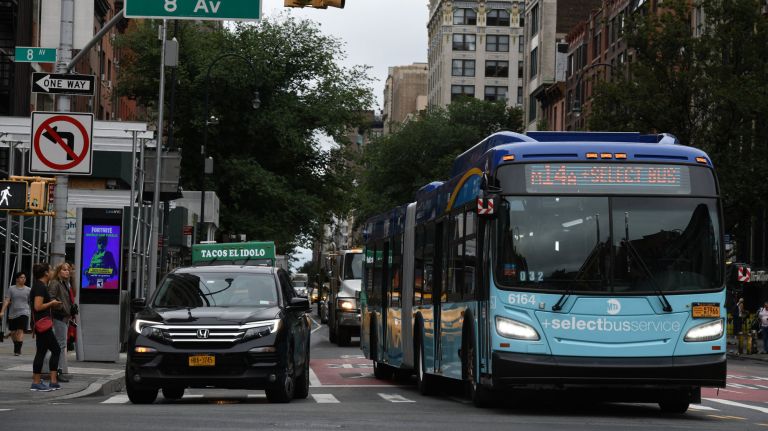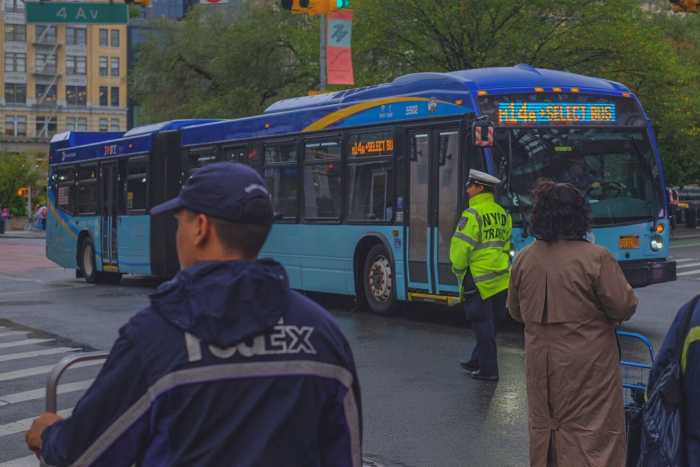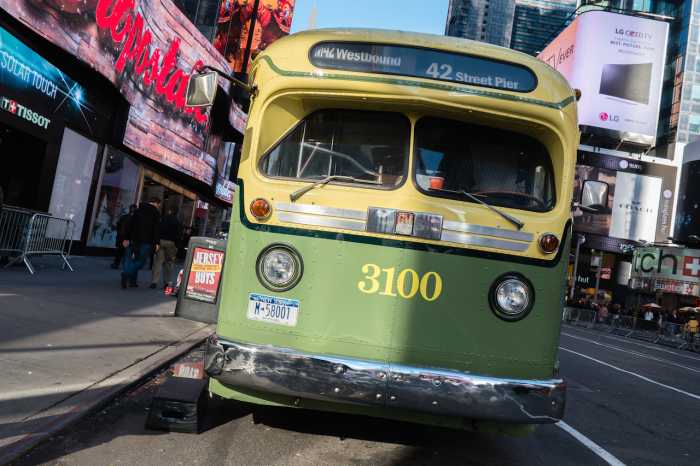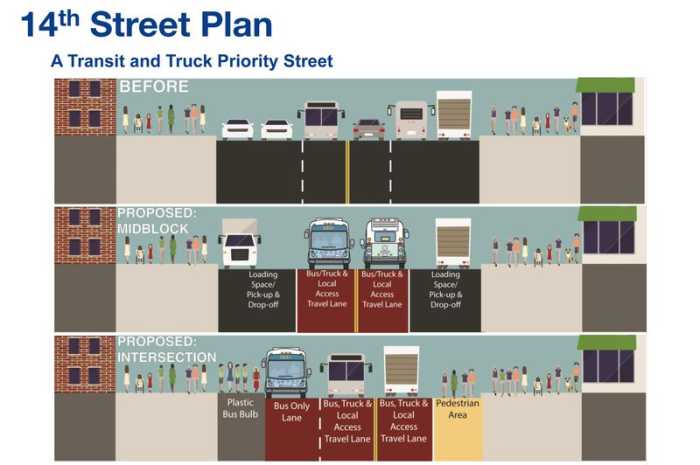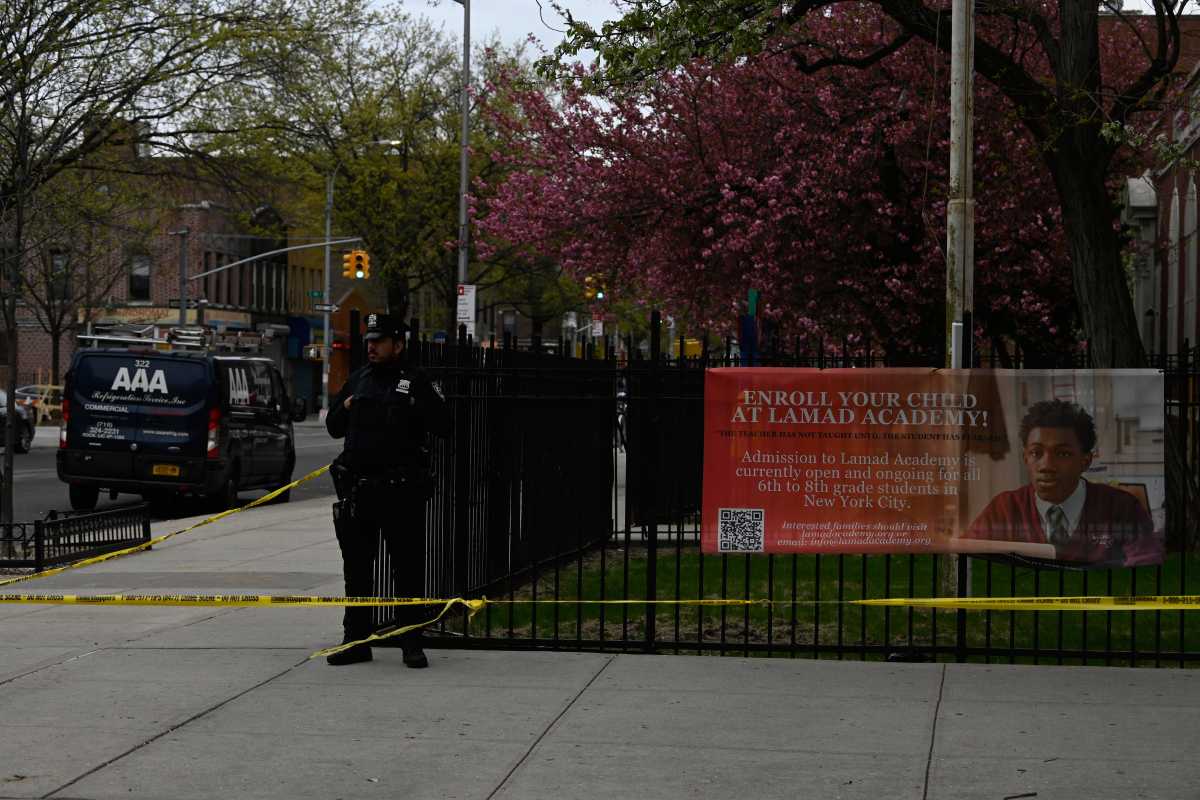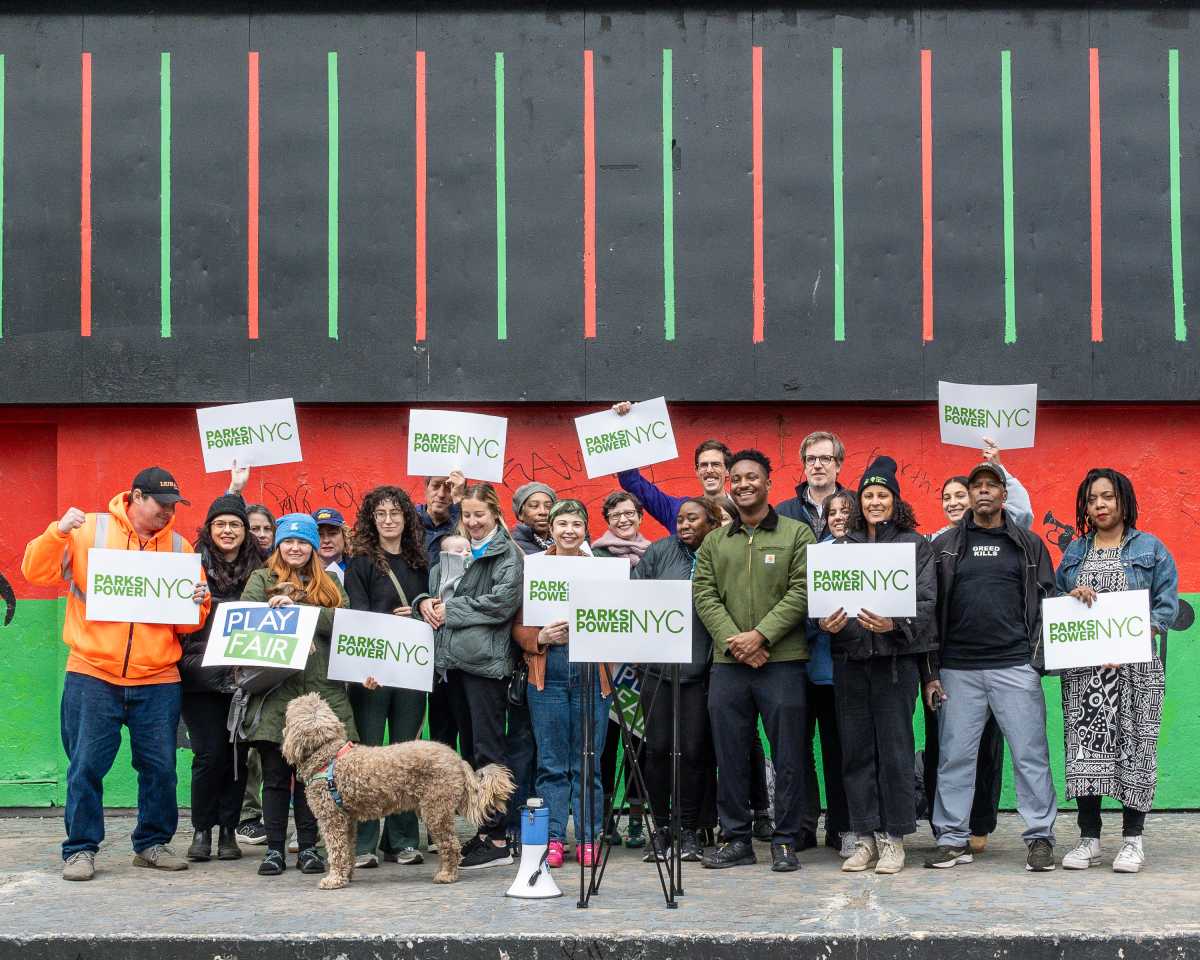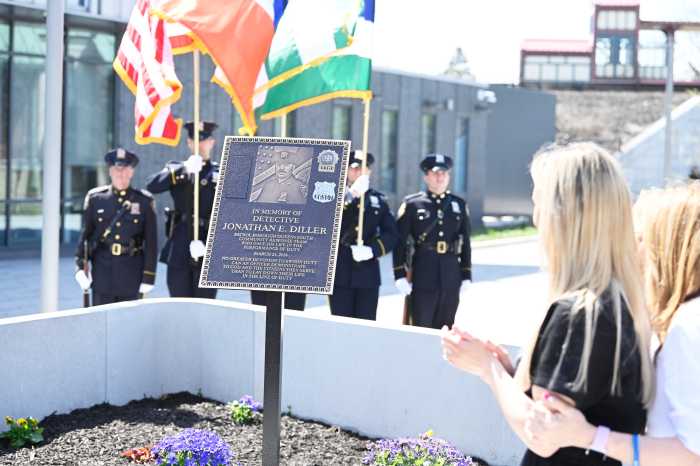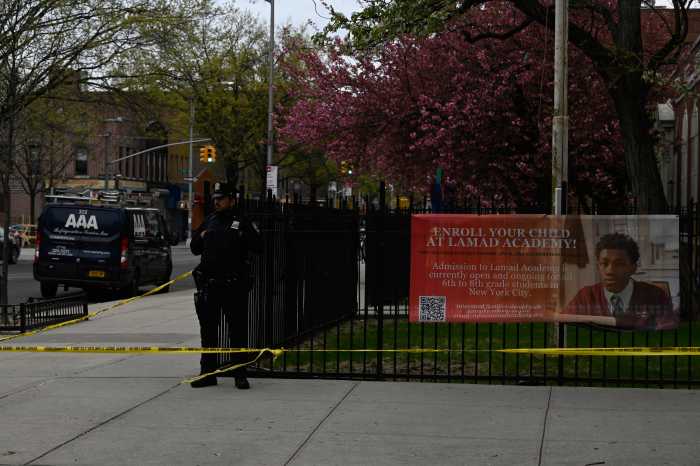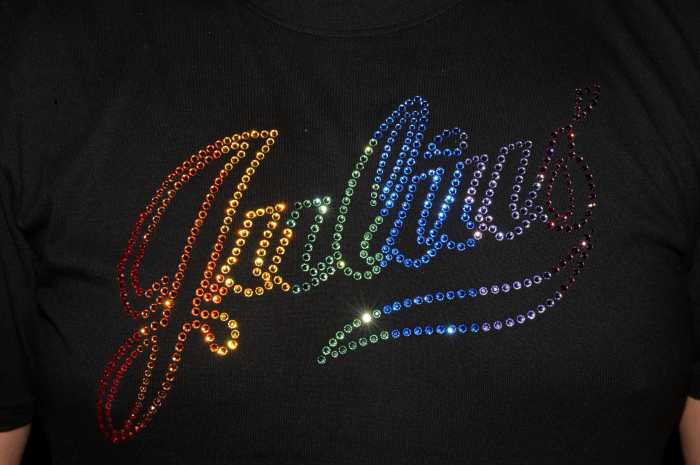Drivers illegally blocking the 14th Street busway in Manhattan are almost three times more likely to get fined compared to other city busways, an amNewYork Metro analysis of city data found.
On 14th Street, drivers were caught hogging red-painted lanes at a rate of more than 23 per hour of the restrictions being in effect and per mileage of busway — almost three times as much as the other two busways with automated camera enforcement on Main Street in Flushing, Queens, and Jay Street in Downtown Brooklyn, according to numbers provided by the Department of Transportation.
One of the reasons for the discrepancy may be that the cameras are mounted on the buses for enforcement on the Manhattan thoroughfare, while the other two have stationary cameras installed along the street, according to one transit advocate.
“Our busways are only as good as our enforcement. This shows that bus-mounted cameras are much more effective than stationary cameras,” Riders Alliance spokesman Danny Pearlstein told amNewYork Metro. “We believe that bus-mounted is the way to go.”
Pearlstein called on the Metropolitan Transportation Authority — which owns the buses as opposed to DOT which oversees the streets — to add more cameras to its fleet to better catch errant motorists hogging the busways.
“The MTA has the ability to roll it out all across the city,” he said. “The MTA needs to expedite implementing these.”
In 2019, the state Legislature lifted a cap on installing automated enforcement cameras for bus lanes in the city, and the MTA has mounted the cameras to buses on seven routes so far, including the M23 SBS, M34 SBS, M86 SBS, M14 SBS, M15 SBS, B44 SBS, and B46 SBS.
The amNewYork Metro analysis looked at the number of violations the city issued to drivers on each busway since officials started fining drivers via automated camera enforcement until June 15 — the date of the data provided — while accounting for each roadway’s different length and hours of operation.
The examination did not take into account the warnings issued to drivers during the state-mandated 60-day grace period at the beginning of each camera enforcement program. On the recently-finished 181 Street busway in Washington Heights, this warning period remains in effect until mid-July.
Penalties for rule-breaking motorists start at $50 per offense, and increase by $50 increments per violation, up to a maximum of $200 for each violation during a 12-month period.
The data
On 14th Street, DOT has doled out some 208,878 fines during 8,192 hours of being active and across 1.09 miles of busway since Jan. 20, 2020, yielding a rate of 23.39 per hour and per mile.
On Main Street, the number comes down to 4,329 fines since issuing violations began on April 9, 2021, with 1,608 hours of active busway on the 0.3-mile stretch, resulting in a rate of 8.97.
On Jay Street, the city issued 2,871 fines since March 8, 2021, with 840 hours of active busway across 0.4 miles, a rate of 8.54, the lowest of all three.
The Brooklyn busway goes through the borough’s central business district, which for years has suffered from rampant abuse of placard parking, much of which likely due to the many government agencies that are headquartered nearby.
So 14th Street had a 2.61 times higher rate of fines than Main Street and 2.74 times higher than Jay Street.
While the Manhattan busway had a higher amount of traffic before the busways were implemented than the other two, it was only 1.69 times busier than Main Street and 1.63 times more than Jay Street, according to average mid-week traffic counts provided by DOT.
Despite the disparities, the busways have been all been a success for riders, who now enjoy faster commutes on all three roadways.
On 14th Street, bus speeds improved by 36% after implementation, benefitting some 32,000 daily riders pre-pandemic, according to DOT.
On Jay Street, 46,000 daily riders could hop on buses going 47-79% faster southbound and 31-53% quicker northbound, and on Main Street, 155,000 daily bus passengers rode 1.2-29% faster after the busway’s arrival.
An MTA spokesman told amNewYork that the agency has earmarked $85 million in the current capital plan to expand its bus-mounted enforcement program.
“The MTA is proud to be working with the NYPD and NYC DOT on one of the most aggressive and successful automated bus lane enforcement programs in the country,” said Aaron Donovan in a statement. “We look forward to expanding camera enforcement to additional corridors in the coming months. Remember, if you’re not a bus stay out of bus lanes and busways because it’s the right thing to do and if you don’t, there will be fines.”



